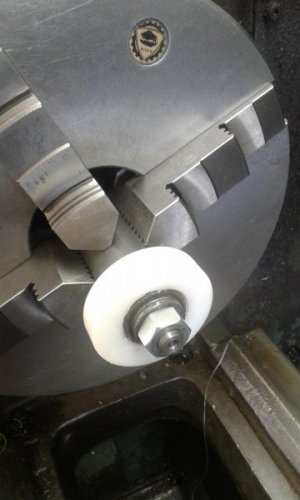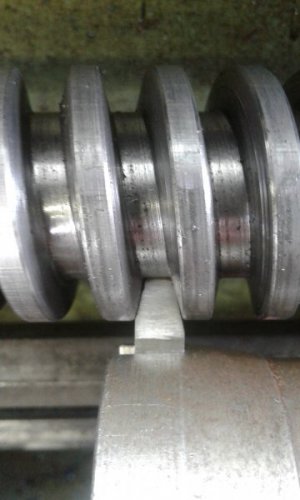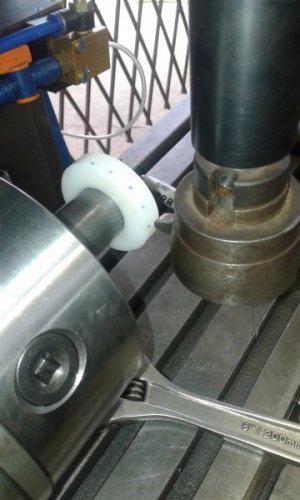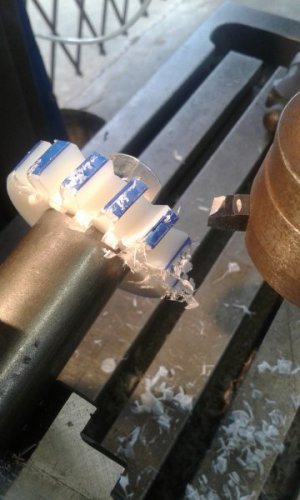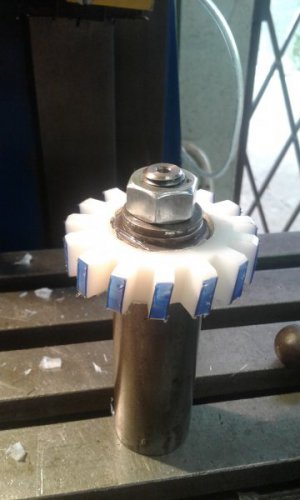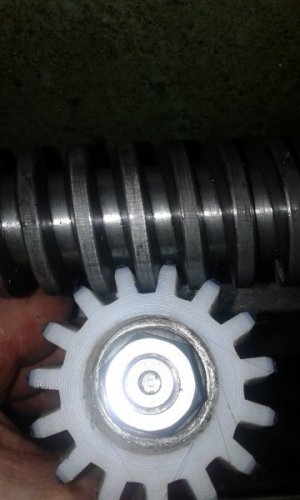- Joined
- Sep 29, 2017
- Messages
- 2,253
I hope someone can help you. I must put this project on ice for now,because I have a few jobs that came in and that must be done first. Although I really want to get to cutting some gears. Good luck to you plumber man.Ive found this thread quite interesting and frustrating. It has reminded me how weak my knowledge of things is. (maths).I love being a hobby machinest but not having anyone to share ideas I guess you learn by yourself and just get the job done.
In terms of thread cutting I cut ninety percent of the time a single pitch. That is 14 tpi. It is for plumbing fittings (bsp )as I am a plumber.I seldom cut threads.
But it got me thinking .My leadscrew is 6mm and most of my threads are short so I just leave the half nut closed.If Im doing metric threads I still keep the half nut closed but if its a pitch like 1mm or 1,5 or 2mm I sometimes loosen the half nut and and wind the carriage back .
So it got me thinking. I have to admit that I havnt used the thread dial for ages. So I thought I would try use it and no matter what I do I cant get it to work. I tried it on the metric setting and tried a 1,75 mm setting. It just doesnt follow the chase. This is where my maths becomes a problem. I just dont understand it.
So are there any emco owners out there who own an emco v13 with a 6mm metric leadscrew and who have a thread dial who can help me out on how to use it.
Issue #271 of Model Engineers' Workshop (September 2018) includes an article entitled "Making a Threading Indicator for a Lathe." It's on pages 58 thru 63 and continues/concludes in issue #272 (Autumn Special 2018), pages 67 thru 69. It goes into great detail, including the required parameters for both Imperial and metric (2 thru 6mm pitch) leadscrews. I have no idea how easy it it for you to get publications from the UK where you are. If need be, PM me and I can scan and email the pages to you.
I have a 1.5m between centres lathe. Yes, I don't know why I should buy another lathe to solve a problem, but I don't have any ill feelings towards the member,but it was a strange reply to my problem.It is a single start thread and not multi start? Either way, you would be far better off making a direct copy from drill rod/silver steel then cut teeth to make a gear hob. (expensive in 40mm) For a one off to cut bronze or brass, a cheaper alternative would be use mild steel and case harden it. Because of the diameter of gear blank you will almost certainly need a worm wheel type gear that fits 'around' lead-screw (I forget correct name at present, it's concave). There are plenty of instructions and video's about making gear hobs for 'softer' materials. With a 40mm lead-screw you obviously have a pretty large machine. As for the comment about buying a NC machine, I don't know how anyone can be so asinine?????.
